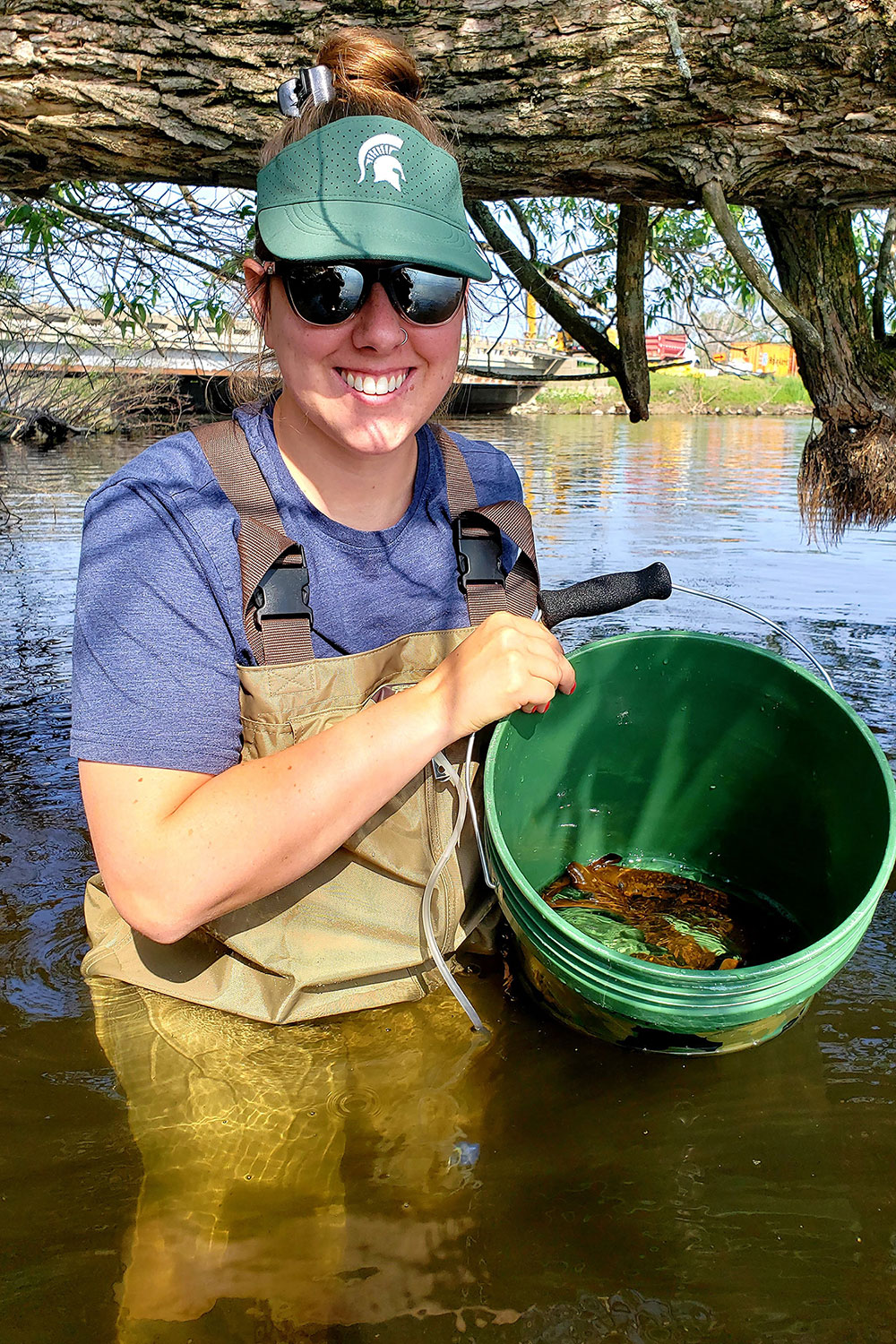
Research Reveals Sea Lamprey Travel Patterns in Great Lakes Waterways

How do you catch an invasive fish that’s solitary, nocturnal and doesn't feed on bait?
Researchers in the Michigan State University College of Agriculture and Natural Resources are one step closer to figuring it out.
In a study published in the Journal of Experimental Biology and funded by the Great Lakes Fishery Commission, Kandace Griffin, a fisheries and wildlife doctoral student, and Michael Wagner, professor in the MSU Department of Fisheries and Wildlife, found that sea lampreys — a parasitic fish considered an invasive species in the Great Lakes region of the U.S. — follow a clear pattern of staying in the deepest parts of a river.
These findings are important for informing sea lamprey management strategies, conservation of fish species native to the Great Lakes and protecting the region’s $7 billion fishing industry and the 75,000 jobs it provides.